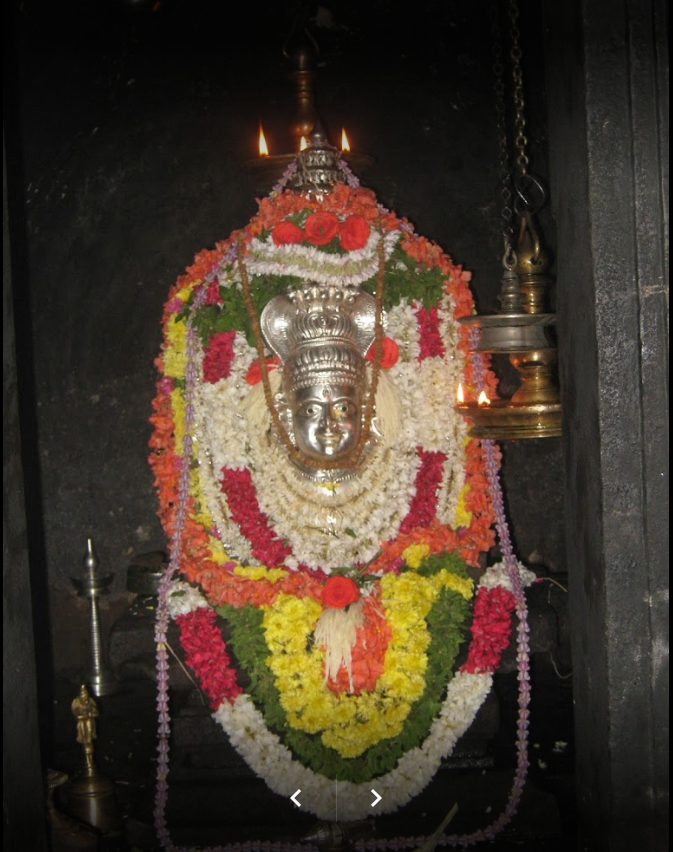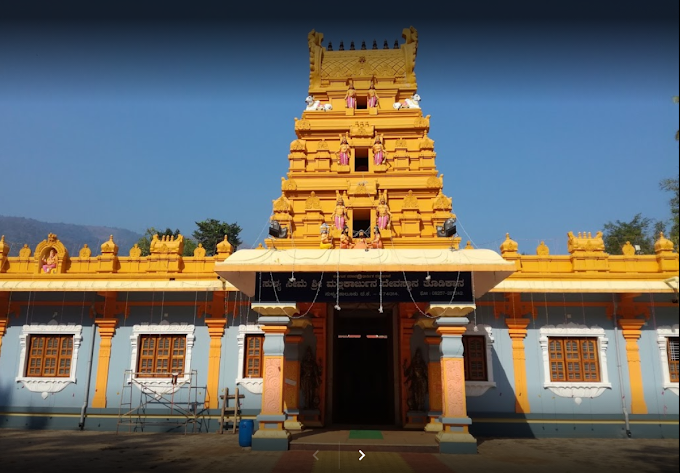Kamakhya Temple Guwahati, Assam
Maa Kamakhya or Kameswari is the renowned Goddess of Desire whose famous shrine is located in the heart of Nilachala Hill situated in the western part of Guwahati, the Capital City of the state of Asom in North East India. Maa Kamakhya Devalaya is considered most sacred and oldest of the 51 Shakti Peethas on earth. It is the centrepiece of widely practiced, powerful Tantrik Shaktism cult in India. Apart from the main temple of Maa Kamakhya ,there are temples of the Dasamahavidya (ten incarnations of the deity) namely Kamakhya (i.e. Tripura Sundari, alongwith Matangi and Kamala), Kali, Tara, Bhuvaneshvari, Bagalamukhi, Chinnamasta, Bhairavi, Dhumavati, and five temples of Lord Shiva namely Kameswara, Siddheswara, Kedareswara, Amratokeswara, Aghora and Kautilinga around the Nilachala Hill which is also called as Kamakhya Temple Complex.
Guwahati is an ancient city and it is mentioned as Pragjyotishpur in many ancient literature and manuscripts. This capital city of the state of Assam is dotted with a number of ancient temples. The most famous among these is the Kamakhya Temple. The Hill of Nilachala, mentioned as Nilakuta, Nilgiri, Kamagiri in ancient texts and also popularly known as the Kamakhya Dham, where the famous temple of Mother Goddess Kamakhya is situated in the western part of the Guwahati (91042/ East – 26010/ North) the gateway to the North East India and capital city of Assam.
The Nilachala is comprised of three parts (i.e. the Brahma Hill, Vishnu Hill and Shiva Hill). This temple town is approximately 600 feet above the plains. The Bhubaneswari Temple is located at the highest point from where one is able to enjoy the panoramic view of the Guwahati City. The mighty Brahmaputra mentioned as Louhitya in epics and Puranas is flowing on the northern side of the Hill. The Nilachala Hill houses some other temples such as the Banadurga temple, the Jaya Durga temple, the Lalita Kanta temple, the Smasanakali temple, the Gadadhar temple, the Ghantakarna temple, the Trinath temple, the Sankheswari temple, the temples of Dwarpala Ganesha, the Hanuman temple, the Pandunath temple (located in Baraha Hill) etc.
History
Kamakhya Devalaya is inter-mixed with oral history and legends, sometimes these soutrces reflect different periods of time. Mention of Kamakhya has been made in various ancient literatures e.g. Devi Bhagawat, Devi Purana, Kalika Purana, Yogini Tantra, Hevajra Tantra etc. The origin of the Kamakhya Temple is believed to be pre-Aryan or tribal in traits and rituals by many. But religious literature tells us that the original temple was built by Kamdev who regained his beauty here. Built with the help of Bishwakarma, this temple was believed to be a gigantic structure and probably was much bigger than the present one. It was full of beautiful architechtural and sculptural wonder. However, due to some unknown reasons, the upper portion of the temple was completely destroyed. For a long time, the temple lost its importance due to the rise of Shaivism among the rulers and the subject of what was known as Pragjyotisha Kingdom. The Kamakhya Temple’s origin are said to be pre-Aryan.
From the historical point of view, the temple can be presumed to have come into prominence during the reign of King Naraka who is said to be the earliest paramount ruler of the Brahmaputra Valley. But among the successors of Naraka, nothing written or evidential reference of patronage towards the temple is to be found and its history became obsecure till the rise of the Koch Kingdom during the mid 16th Century AD.
Though there is no concrete historical evidence , some researchers drawn conclusion that during 500 C.E. , a beautiful stone temple of Maa Kamakhya was erected in the Nilachal Hill. But perhaps due to natural calamities, the upper part of the original temple was completely destroyed and the lower part was gradually buried.
There are two different views about the reconstruction of the temple during the medieval time. The Koch King Biswa Singha , rebuilt the temple in arounb 1553-54. Afterward, Kalapahar, a muslim invader from Gaur, believed to have destroyed the temple. Many scholars however do not entertain this theory and relate the cause to some kind of natural calamities. The great Koch king Naranarayana who succeeded King Biswa Singha visited this place with his brother Chilarai, they found it in complete ruins. Narayana renovated the temple in 1565 A.D. He also gave royal patronage to the temple.
The political scenario of Assam entered a new phase during the early17th Century. During this period, Ahoms established themselves as the paramount power of the Brahmaputra valley and they started showing keen interest in the temple. There are many stone inscriptions and copper plate to substantiate the involvement of the Ahom Kings with the temple.
The great earthquack of 1897 A.D. caused some damages to the main temple and also mutilated the domes of some other temples of Kamakhya. The royal court of Kochbihar came to the rescue and donated a hefty amount for repairing. Repairing of the temple was also said to be done during various phases in later periods.
Temple Legend
The holy shrine of Maa Kamakhya is bestowed with its own set of myths and mysteries. The aesthetic significance of this temple cannot be ascertained only by its factual history; rather one needs to dwell upon the oral recorded history & historical legend. The earliest story dates back to creation itself. There are quite a few oral legends prevalent in connection with Maa Kamakhya.
The first legend : Despite being forbade by her husband Lord Shiva, Sati went to a yagna performed by her father Prajapati Daksha. Lord Shiva & Sati were not invited by Daksha. After Sati reached the Yagna spot, Daksha started to insult Lord Shiva in front of all the denizens of Tribhuvana. Unable to bear the insult, Sati took her own life at the Yagna spot itself. When Lord Shiva came to know about the tragic incident, he became furious.
He took dead Sati’s body on his shoulders and started performing Tandava. Vishnu tried to pacify Shiva, but failed. Later he dismembered the body of Sati into 51 pieces with his Sudarshan Chakra. The places where each part fell came to be known as the Shakti peethas. Kamakhya, also mentioned as Kubjika Pitha is the place where the Yoni- Mudra ( the female Genitalia or the Vulva) of Sati fell. was not known till Kamadeva, the God of love, searched it out to rid himself of a curse by Brahma. He regained his rupa (beauty) here after worshiping in this peetha. Since Kamadeva regained his rupa here the entire place is called Kamarupa (Kamrup) and the deity is known as Kamakhya or one worshipped by Kama.
The Kamdeva legend: The legend has it that when Kamdeva- Rati’s huband was reduced to ashes by the fire spewed out third eye of Lord Shiva . Kamdeva's wife, Rati pleaded before Lord Shiva and told him that this was not Kamdeva’s fault at all as he was told to do so by the Gods and asked him to to kindly revive Kaamadeva. Being an embodiment of love himself, Lord Shiva gladly accepted to do so and he gave life to Kamdeva. However, Kamdeva’s earlier beauty was gone. Then both Rati & Kamdeva started praying Lord Shiva again to restore Kamdeva into his original self. The Lord then advised Kamdeva to find the sacred Yoni Mudra in Nilachal Parvat & worship Devi there, only then he would be able to regain his beauty. After many years of meditation, Kamdeva finally succeeded to get Devi’s blessings and also to get back his lost beauty. A grateful Kamdeva then erected a magnificent temple over the Yoni Mudra with the help of Vishakarma. The region later came to be known as Kamarupa as Kamdeva regained his beauty or Rupa here.
“Kalika Puran” one of most sacred text for the “Shakta” sect written around the 9th century provides a mythical story about the origin of the temple. It mentioned Nilachala in ancient Kamrup is the spot where the Lord Siva and Shakti used to meet their physical desire i.e. Kama. The “Kalika Puran”contains many details about Kamakhya Temple.
Kalika Puran related Naraka whose father was Lord Vishnu and mother was Dharitri with the Kamakhya Temple. After spending his childhood in Mithila, Naraka was believed to have come to Pragjoytisha at the order of his father Lord Vishnu. Naraka defeated the Kiratas, who were believed to be the earliest worshipper of Goddess Kamakhya; led by their King Ghatak. Though initially Naraka was a follower of Goddess Kamakhya but later under the influence of Banasura, king of Sonitpur, he developed negative qualities. Naraka said to have prevented sage Vasistha from having darshan of the deity, because of which Vasistha cursed both the Goddess and Naraka. When the atrocities committed by Naraka rose too much, Lord Vishnu had to intervene and kill him.
The “Yogini Tantra”, another ancient literature believed to be written around 16th century where the mention about Goddess Kamakhya is found. In the “Yogini Tantra”,the legend relating to the emergence of Kamakhya as a symbol of procreation. The episode described in “Yogini Tantra” goes like this.
Lord Brahma after creating the universe, became arrogant because of his power of supreme creativity. This prompted Goddess Sanatani Kali to teach him a lesson. She created a demon called Kesi out of Brahma’s body. As soon as he was born, the demon rushed towards Brahma to swallow him up. Brahma fled in the company of Vishnu. Brahma soon realized his sin and approached the Goddess for help along with Vishnu. The Goddess then came to his rescue and killed the demon. The Goddess then told Brahma and Vishnu to create a mountain over the dead body of demon Kesi ; where there would be grass for cattle and she also told them that Kamarupa is the most sacred place on earth. Brahma and Vishnu were told to offer prayer meditate in front of the Yonimandala (female genital) that came to appear subsequently. The place was being called as Nilakuta Parvat or Nilachala.
There is another story about the origin of the temple which is related to Koch King Viswa Singha. During the fight with the Ahoms, Viswa Singha and his brother Siva Singha lost their ways and reached the top of Nilachala Hill. They met an old woman who showed them the Pithasthan of Goddess Kamakhya and requested them to construct a temple with gold there. The King offered his prayers and promised that if his wishes are fulfilled then he will definitely do it. Accordingly after his wishes got fulfilled, king Viswa Singha tried to build one temple with bricks but that did not work. The Devi then came in his dream and reminded him about his commitment to build the temple with gold only. The king pleaded to the Devi mentioning his inability to do so and then the Devi advised him to put at least little amount of gold with the bricks. After this the temple was built which was later destroyed. The exact reason is not known. Some say it was demolished by Kalapahar, a Muslim invader while many scholars link this to be caused by some sort of natural calamity.
After this, the great Koch King Naranarayan who became the successor to Viswa Singha along with his brother Chilarai rebuilding the temple over the ruins of the earlier one.
In conclusion, it can be said the the Kalika Purna gives an enormous interpretation of the Yoni Goddess, the Yogini Tantra gives a different account stressing creative symbolism of Yoni. The various historical legends indicate that worship of Kamakhya is undatable. She has been a converging point of all the communities be it of the hills, forest, villages or cities.
Contact
O/o The Doloi,
Maa Kamakhya Devalaya,
Guwahati, Assam, India.
Pin-781010
Guwahati, Assam, India.
Pin-781010
0361-2734654
0361-2734655
0361-2734655
info@maakamakhyadevalaya.org
maakamakhyadevalaya@gmail.com
maakamakhyadevalaya@gmail.com
















